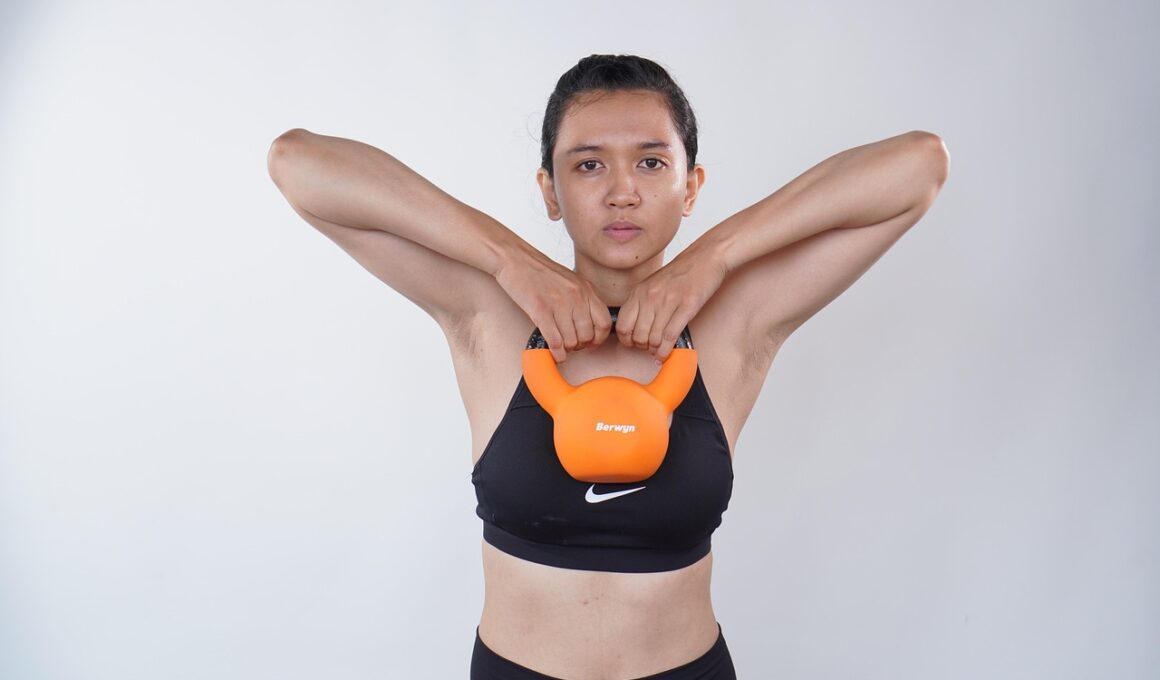How to Choose the Right Kettlebell Weight for Women
Choosing the right kettlebell weight is crucial for women, as proper weight selection ensures effective workouts and reduces the risk of injury. Assessing your fitness level is the first step in this process. If you’re new to kettlebell training, it’s recommended to start with a lighter weight. Most women find that a kettlebell weighing between 8 to 12 kilograms is suitable for beginners. Your physical activity and experience also play a significant role in selecting your ideal kettlebell. If you regularly engage in strength training or cardio, you may opt for a heavier weight. For those accustomed to lifting weights, starting with a 12 to 16-kilogram kettlebell might be appropriate. As you become more skilled, gradually increasing the weight is vital for continued progress. Don’t forget to consider the types of exercises you’ll perform. Movements like swings may require different weights than presses. Always prioritize form and safety over lifting heavy. Ultimately, your best guide is your body’s feedback as you incorporate kettlebell training into your fitness routine. Finding the right weight will enhance your experience and effectiveness in achieving your fitness goals.
Transitioning to heavier kettlebells requires a considered approach. Regular practice will enhance your strength and skill but be wary of pushing yourself too hard too quickly. A good strategy is to increase your kettlebell weight by about 1 to 2 kilograms as you progress. This incremental increase allows your muscles to adapt properly. Listening to your body is essential—feeling strain or compromised form signals it’s time to reduce the weight or pause for recovery. Alongside physical strength, mental readiness is vital. Sometimes we feel pressure to use heavier weights due to social influences or personal expectations. However, it’s crucial to understand that everyone’s journey is unique, and there’s no shame in using lighter weights as you build up your strength. Additionally, varying your kettlebell routine can prevent plateaus. Incorporating different exercises, such as lunges, squats, and rows, can help maintain motivation and improve overall fitness. Align your kettlebell training with your broader fitness goals, and don’t hesitate to consult with a trainer for personalized advice. Such guidance can tailor your kettlebell selection to your specific needs, ensuring a successful workout experience.
Types of Kettlebells for Women
When selecting a kettlebell, it’s essential to consider the types available on the market. Generally, there are a few primary types that women may choose from based on preference and intended use. Cast iron kettlebells are the most traditional and typically feature a smooth handle for comfortable gripping. Vinyl-coated kettlebells are becoming increasingly popular due to their colorful designs and protective exterior. These kettlebells can be a smart choice for home workouts since their surface prevents damage to floors. Another option is competition kettlebells, which come in standardized weights regardless of size, providing uniformity when practicing. While traditional kettlebells are often wider and can present grip challenges, competition kettlebells have a narrower build and are easier to maneuver for women. Each type has its pros and cons, so it’s crucial to test them out if possible. Hold them in your hands and see which feels comfortable. Always prioritize quality over cost; investing in a durable kettlebell will offer long-term benefits and better performance. Ensuring the kettlebell fits your workout routine will lead to a more enjoyable training experience.
As you grow more comfortable with kettlebell training, exploring different routines will keep your workouts fresh and engaging. Mixing various kettlebell exercises can offer balanced strength training, engaging multiple muscle groups and preventing monotony. Some key movements to consider incorporating include kettlebell swings, deadlifts, goblet squats, and Turkish get-ups. Each exercise brings unique benefits, targeting different areas. For example, swings improve cardiovascular fitness while also strengthening the core and lower body. Conversely, goblet squats can enhance flexibility and increase lower body strength. Additionally, varying the weights per exercise boosts workout effectiveness. Embracing variability in your routine also aids muscle adaptation and minimizes injury risk, as muscles learn to respond to new challenges. Furthermore, consider alternating weekly focus to allow specific muscle recovery while targeting strength areas. Dedicating days to upper body, lower body, or core workouts can maximize effectiveness. Always maintain proper form to avoid injury. Engaging a trainer for guidance on form can provide valuable feedback. Remember that enjoying your workout is integral to long-term success in your kettlebell training journey.
Maintaining Proper Form
Maintaining proper form during kettlebell exercises is vital. Not only does it maximize effectiveness by targeting the right muscle groups, but it also significantly reduces the risk of injury. Beginners especially should aim for quality over quantity. As you begin to incorporate the kettlebell into your workouts, take time to learn the fundamentals of each exercise. This may involve practicing movements without weights using just body mechanics. Focus on your grip; your grip should be firm yet relaxed, allowing proper control. Additionally, ensure your back remains flat and core engaged, adjusting your stance as needed. Using mirrors or filming yourself can offer visual feedback for maintaining form. Furthermore, prioritizing breathing patterns improves your performance; exhale in exertion and inhale during recovery phases. When learning new techniques, practice each motion slowly at first before increasing speed or weight. Rushing can lead to improper form and strain. Successful kettlebell training relies on the foundation of proper movements, so take all the time needed to develop a strong base. Consider seeking assistance from certified trainers to refine your kettlebell techniques.
As you advance in kettlebell training, your goals may evolve, necessitating adjustments to your routine and weight selection. Progressing from foundational exercises to more advanced techniques often means adopting heavier kettlebells. Therefore, tracking your progress is beneficial. Keeping a training journal can help you document weights used, exercises performed, and perceived difficulty levels. By reviewing your journey, you can identify strengths and weaknesses, allowing focused improvement areas. Furthermore, noticing trends can guide adjustments to your weight selections, ensuring they align with your fitness objectives. It’s also important to celebrate milestones, small or large. Recognizing your improvements maintains motivation throughout your fitness journey. Participating in group classes offers camaraderie and support, as you can share experiences and advice with fellow kettlebell enthusiasts. Engaging with a supportive community fosters a positive atmosphere and encourages accountability. Additionally, consider participating in kettlebell challenges or events for a well-rounded perspective on your progress. Regularly revisiting goals ensures entrenched commitment toward your kettlebell training path. By adjusting targets, you remain engaged and enthusiastic, navigating any hurdles along the way with confidence.
Conclusion: Embrace Your Kettlebell Journey
As you embrace your kettlebell journey, remember that personal growth and satisfaction come first. Choosing the right kettlebell weight and maintaining proper form are crucial steps toward achieving your fitness goals. This journey can be both challenging and rewarding, making it essential to listen to your body and adjust your routines for the best outcome. Consistent practice, along with a focus on form, will enhance not only your skills but also prevent injury. Regularly vary your workouts and introduce new exercises to keep your training engaging. Documenting progress promotes accountability and enables you to celebrate achievements along the way. Seek feedback and guidance when needed, whether from trainers or fellow enthusiasts. By fostering connections with the fitness community, you’ll deepen your understanding of kettlebell training. Above all, don’t forget to enjoy the process! Fitness is a personal journey, and finding joy in movement is vital. Establishing a positive, goal-oriented mindset enhances resilience as you navigate challenges. Keep pushing forward, and soon, kettlebell training will become an integral part of your wellness routine.
This is another paragraph with exactly 190 words…


